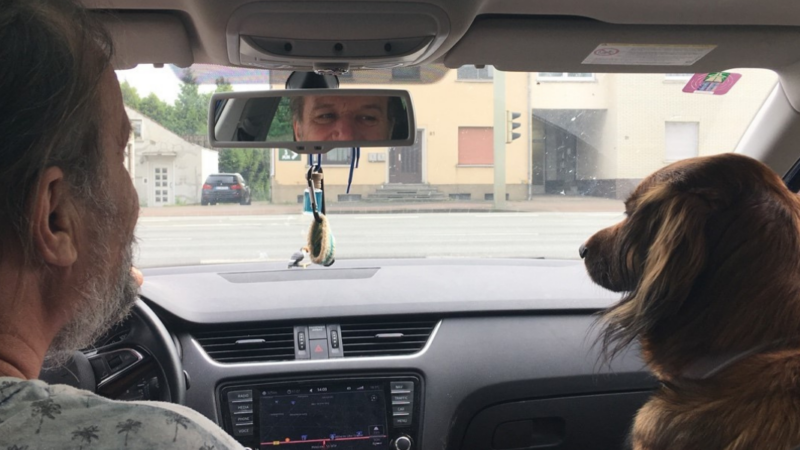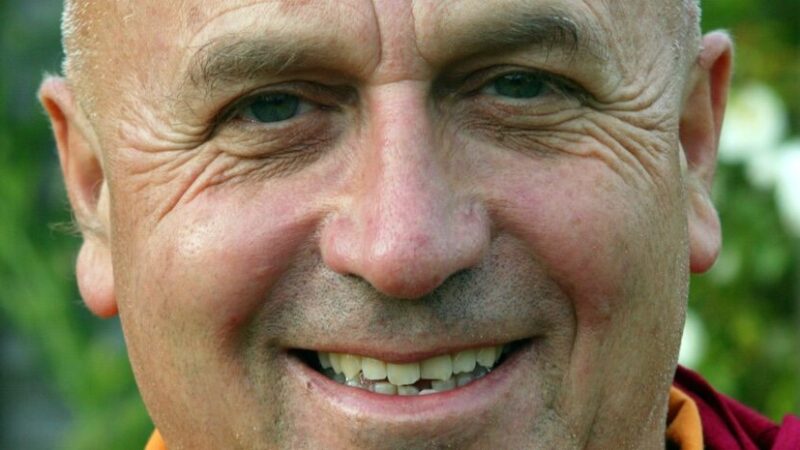-
E90: How to Stop Minding and Start Living
Michael Singer — June 29, 2025
“Do you mind?” We “mind” everything, from traffic to childhood memories, and this habitual...
-
Cyndi Dale: Becoming Your Own Best Ancestor
Cyndi Dale — July 1, 2025
On the surface, it appears as though the lives we live proceed forward moment by moment in a...
-
Honey Tasting Meditation: Build Your Relationship with Sweetness
There is a saying that goes “hurt people hurt people.” I believe this to be true. We have been...
Written by:
Amy Burtaine, Michelle Cassandra Johnson
-
Many Voices, One Journey
The Sounds True Blog
Insights, reflections, and practices from Sounds True teachers, authors, staff, and more. Have a look—to find some inspiration and wisdom for uplifting your day.
Standing Together, and Stepping Up
Written By:
Tami Simon -
The Michael Singer Podcast
Your Highest Intention: Self-Realization
Michael Singer discusses intention—"perhaps the deepest thing we can talk about"—and the path to self-realization.
This Week:
E90: How to Stop Minding and Start Living -
Many Voices, One Journey
The Sounds True Blog
Insights, reflections, and practices from Sounds True teachers, authors, staff, and more. Have a look—to find some inspiration and wisdom for uplifting your day.
Take Your Inner Child on Playdates
Written By:
Megan Sherer
600 Podcasts and Counting...
Subscribe to Insights at the Edge to hear all of Tami's interviews (transcripts available, too!), featuring Eckhart Tolle, Caroline Myss, Tara Brach, Jack Kornfield, Adyashanti, and many more.
Most Recent
Meet The Author of Sovereign Self
The Author
Acharya Shunya is an award-winning and internationally renowned spiritual teacher and scholar of Advaita (nondual wisdom) and a classically-trained master of Yoga and Ayurveda. The first female head of her 2,000-year-old Indian spiritual lineage, she has dedicated her life to the dissemination of Vedic knowledge for the spiritual uplifting of all beings. She is the president of the Awakened Self Foundation with its international headquarters in San Francisco and founder of the spiritual nonprofit Vedika Global. Learn more at acharyashunya.com.
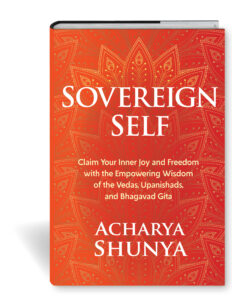 The Book
The Book
A comprehensive guide to yoga’s most influential texts, making their profound teachings both accessible and immediately practical for modern seekers. Filled with hidden insights and engaging guidance, Sovereign Self will help you awaken and recognize your potential to be joyful, resourceful, abundant, limitlessly expansive, and sovereign.
Show us a day in your life.
I lead the life I want to lead, every day, my heart leading me, and not because I must.
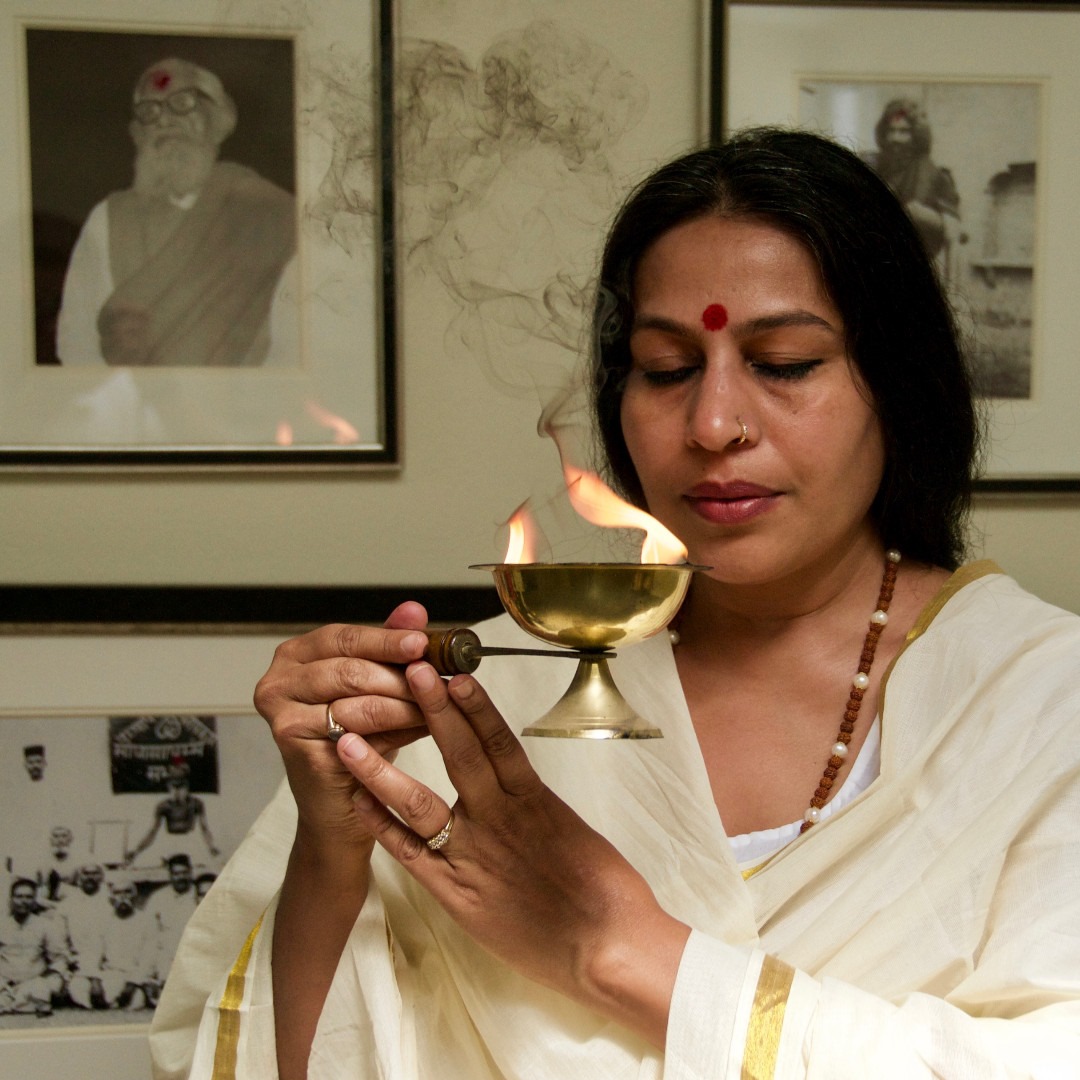
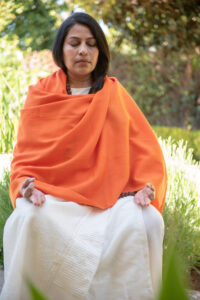
In the early morning I say a prayer of gratitude to my guru and meditate on the beautiful and divine, forever sovereign presence in my heart, that is my true Self.
Self rises silently in meditation to fill my heart with light, and bless me from within. I become, as if renewed, to meet my day with my spiritual power, full on.
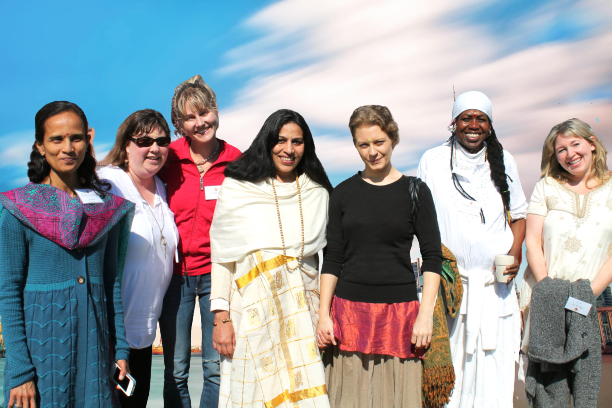
Many spiritual seekers and members of my Vedic lineage often join me through my day.
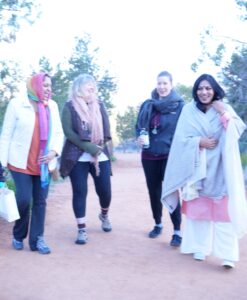


I go hiking with students, lead them through meditations, and impart Vedic wisdom from my 2000-year-old Vedic lineage from India.

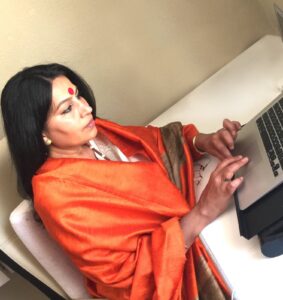

From lunch onwards, I like to be mostly by myself in my study, to think and imagine, to feel and to surrender to my higher Self, and capture my inspiration in words. On many days, I spend time in Vedic ceremony and its consciousness awakening inner rituals and meditations.
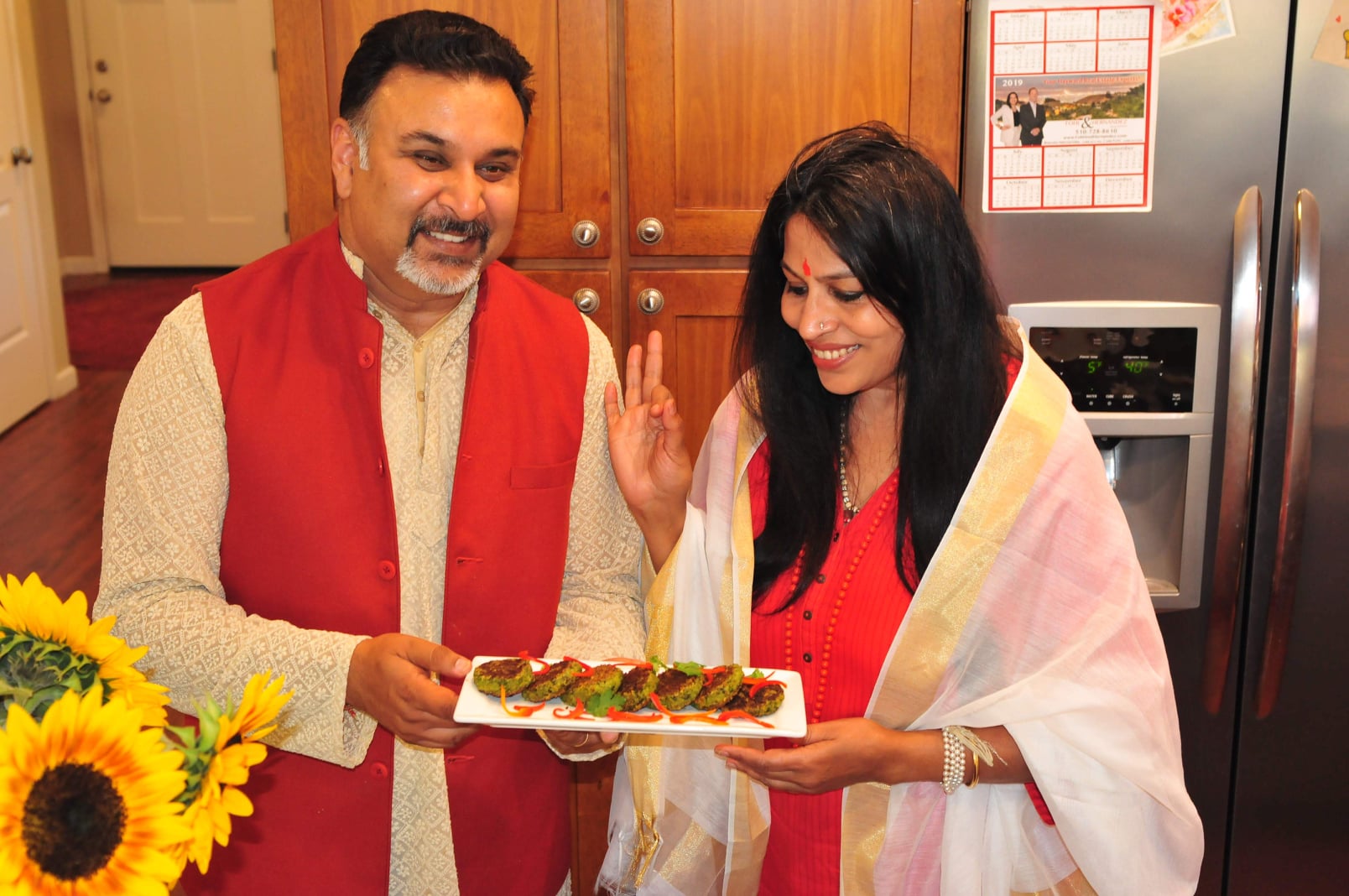
I also value spending time with my husband. Sanjai is a trained Ayurveda chef. Here we are enjoying the fruits of his labor in our kitchen.
Has your book taken on a new meaning in the world’s current circumstances? Is there anything you would have included in your book if you were writing it now?

In today’s uncertain world, embracing one’s unimagined power can open up possibilities as we synchronize with our true Self.
According to the Vedas, Upanishads, and Bhagavad Gita—India’s oldest body of sacred yogic wisdom—human beings can be inspired to awaken from conditioning, shed limiting patterns and shackling attachments, and tap into the wisest, boldest, and most authentic and fearless parts of ourselves—which dwell as an invisible potential inside our heart, called Atma, the boundless one. This mighty Self, with all its hidden powers, becomes activated through right knowledge, meditations, and insights, making us true masters of our destiny, able to forge a path of sovereignty in every circumstance, good or bad.
Knowing the sovereign Self in our heart can alter the course of our life; this Self-knowledge can become a source of inner equanimity in any circumstance in life, not only when life is fun and people around us are acting supportively and lovingly, but also when life is unpredictable and people’s behavior is shadowy and dark.
Naturally, this book has taken on a new meaning since I wrote it because today, our world is besieged by uncertainty and possibilities of disease; death is stalking each one of us, invisibly. To add to our collective sense of anxiety, we’ve also witnessed one of the most polarized elections in this country’s history. Social and racial injustice is at an all-time high. Our reality and our values stand to be changed forever. Now, more than ever, the sanctuary beyond fear and impermanence lies within the rediscovery of our true, invincible nature.
If you are a sensitive and evolved soul who believes in dharma, nonviolence, equality, and justice for all, my book, Sovereign Self, will be like a balm to your soul, a flame lit softly in a pitch-dark room—a path revealed, where none existed before.
Share a photo of you and your pet. Did your pet have a role in helping you write your book?

Noddy, my six-year old labradoodle, has been my constant companion through the writing of Sovereign Self, which took almost three long years. The process required me to let go and descend deep within the mystical realms of my being, and connect with the true Self—the boundless essence, Atma, which I talk about in my book.
It is from here, from that boundless essence where I have always been perfect, complete, and inseparable from Source, that ideas would emerge spontaneously and words would become sentences that shall become path-showers for seekers all over the world. Many times, I would meditate and be lost in trance for hours. Noddy would sit patiently by me, and even sacrifice his desire to bark at his arch-enemy, “Mr. Squirrel.” As long as my eyes were closed, my baby would be quiet as a mouse. But the moment my eyes opened, he would greet me with an explosion of love and affection: “Woof, woof, welcome back to my world, mama; how was your inner world, mama, did you find me in your heart, mama?”
Noddy and our next-door neighbor’s German Shepherd, Peet, have unresolved karmic issues from a relationship in their former lifetime. As a result, whenever Peet barks, Noddy barks back with recognition and emotional resolve to sort the karma issues in this lifetime itself! As I wrote and talked about the human ego and how it becomes lost in the chase of relationships and things, the experience of watching them go back and forth in their dance of egos, through playtime and tug-time and wagging-tail-time and angry growl-time, made me smile, and reminded me that we really are always enough in who we are. This is what Noddy means to me—when he kisses me with all his inner sweetness intact, he reminds me that while my ego may be employed in worldly tug-of-wars, my true Self remains whole, happy, and incredibly sweet within. Noddy, you are such a reminder!

Learn More
Sounds True | Amazon | Barnes & Noble | Indiebound | Bookshop
Meet the Author of The Wim Hof Method
The Author
Wim Hof, a.k.a. “The Iceman,” holds multiple world records for his feats of endurance and exposure to cold—such as climbing Mount Kilimanjaro wearing only shorts and shoes, running a barefoot half-marathon in the Arctic Circle, and standing in an ice-filled container for more than 112 minutes. The benefits of his method, now practiced by millions, have been validated by eight university research studies. For more, visit wimhofmethod.com.
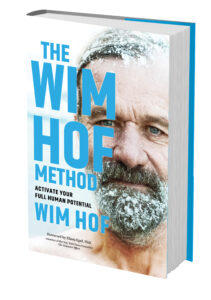 The Book
The Book
Wim Hof shares the life-changing technique that anyone can use to supercharge their capacity for strength, health, and happiness. Join this trailblazing teacher for in-depth instruction on the three pillars of his method (Cold, Breath, and Mindset), the science supporting his techniques, his incredible personal story, and much more.
Show us a day in your life.
Every day is a challenge to do more, as in mindset. My mindset always has been going for the full, everything you got.
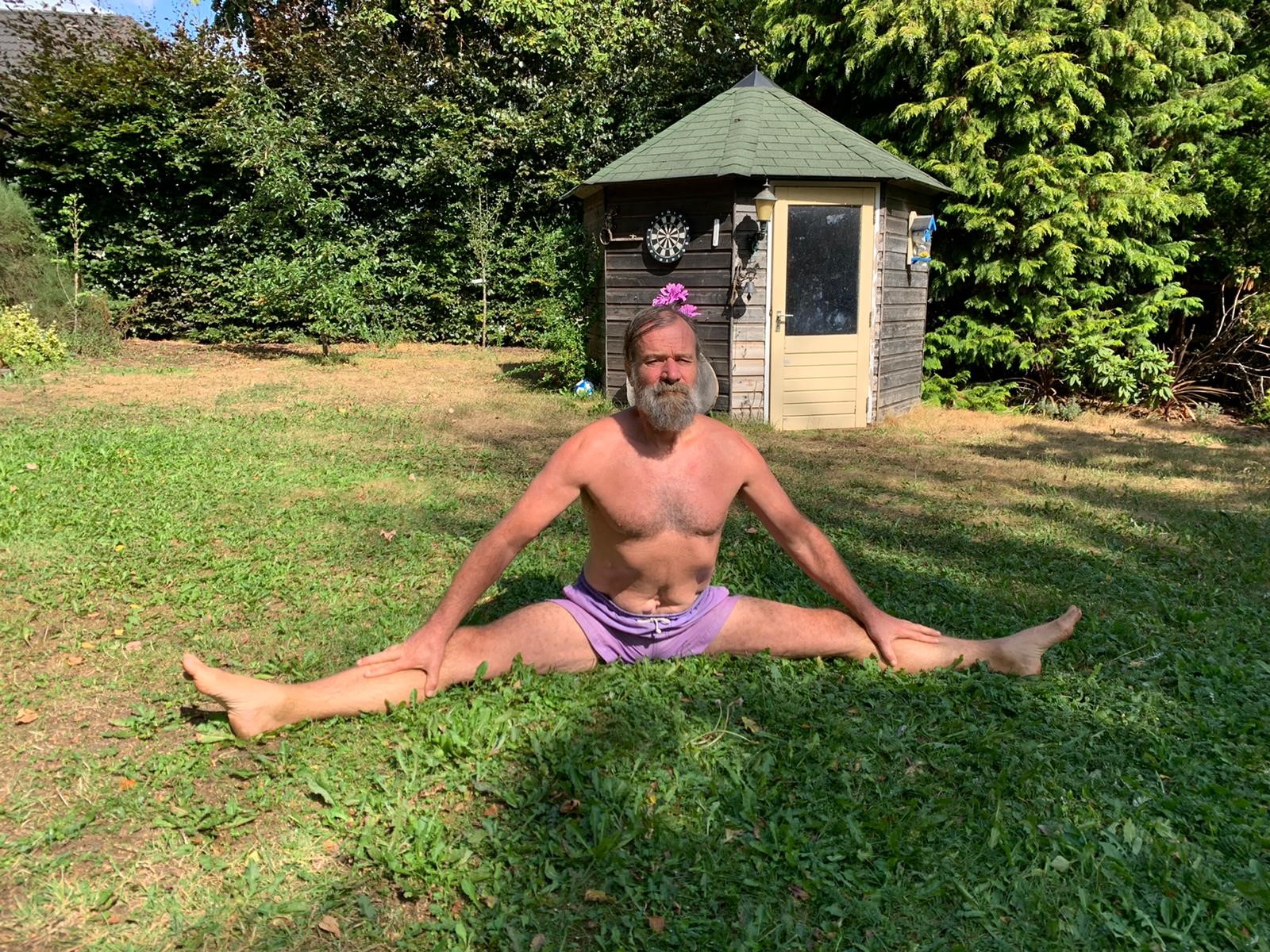
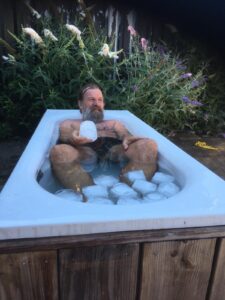 Strong exercising, breathing, postures, power, and ice water.
Strong exercising, breathing, postures, power, and ice water.
I feel everyday gratitude for what has been achieved, which is helping many, many people. My soul knows: you give it all, you get it all.
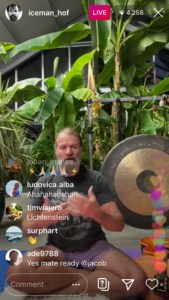
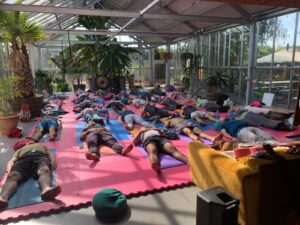

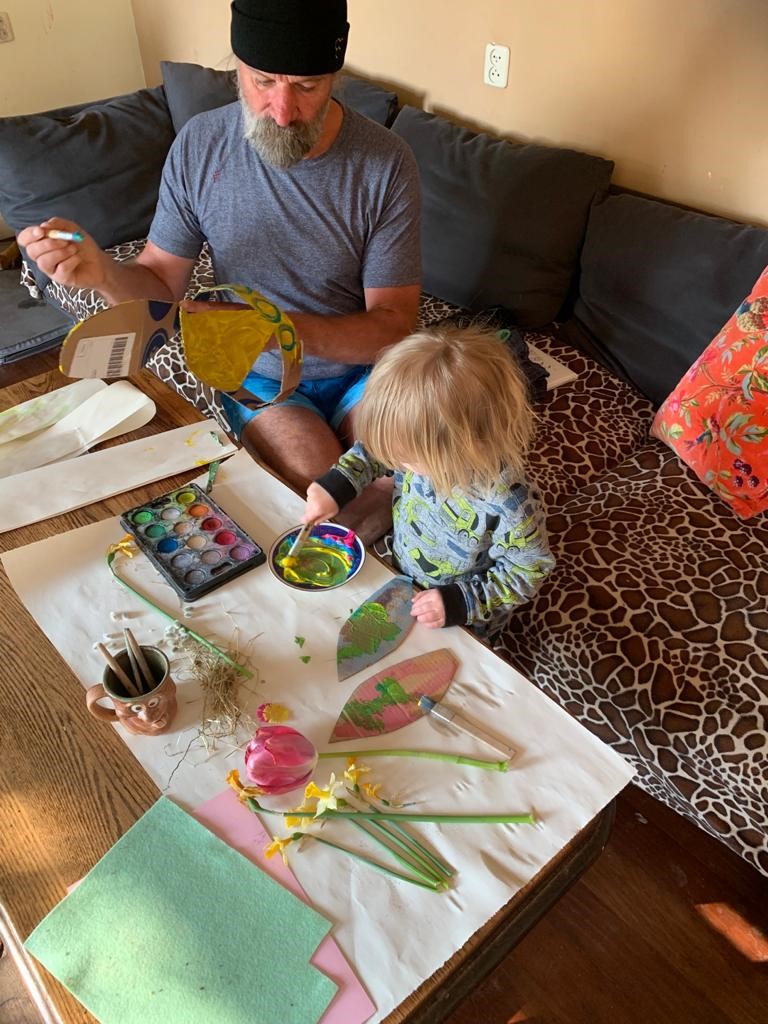
I am very hungry to learn more and go deeper. I spend my days spreading the message as wide as I can. I love my garden, coffee, and my kids—so much richness in my life.
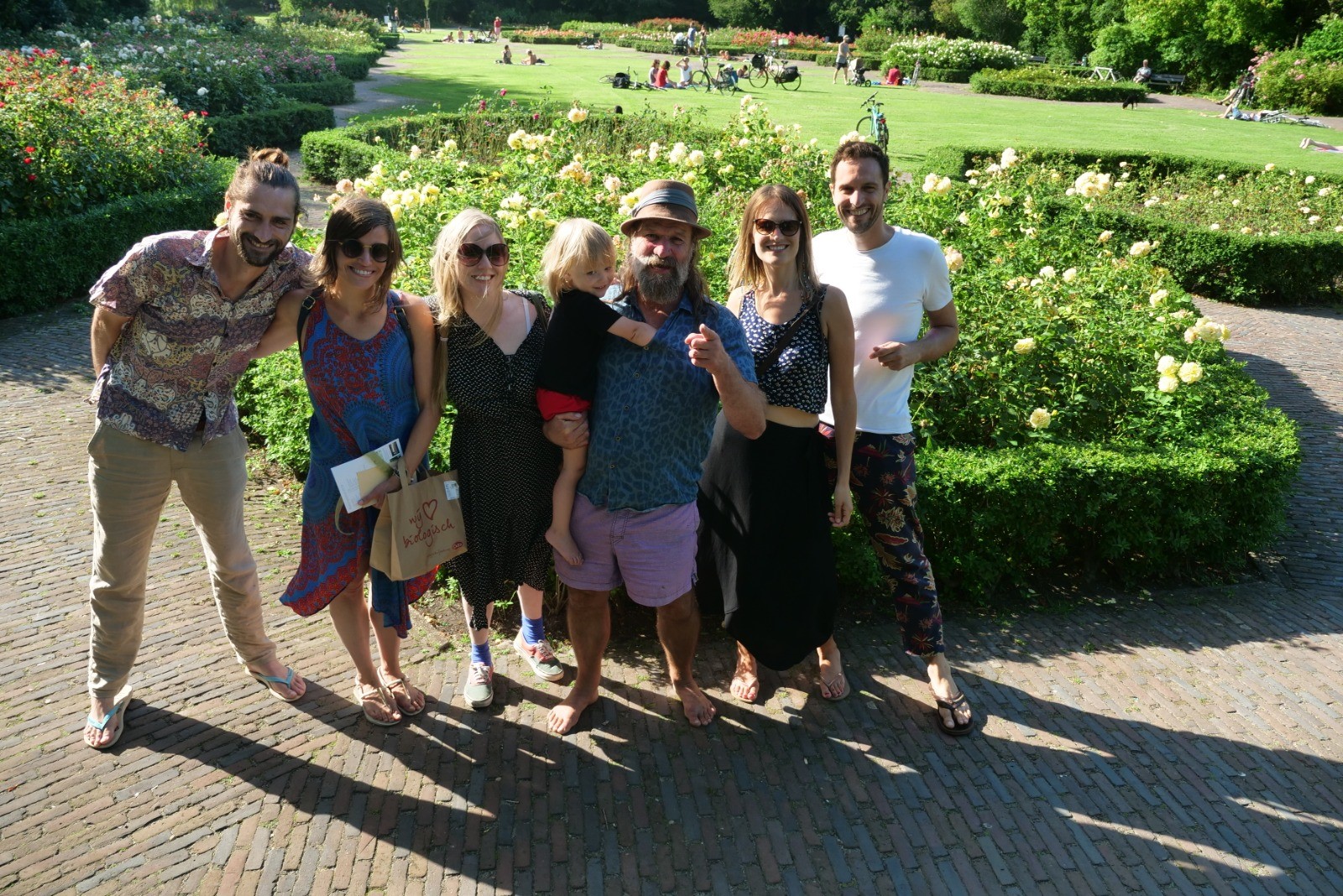
So, I see my everyday routine as a new opportunity to experience full gratitude. I am alive!
Has your book taken on a new meaning in the world’s current circumstances? Is there anything you would have included in your book if you were writing it now?
This book is needed more than ever. We need to not only strengthen our immune systems but to acknowledge that we are capable of dealing with the influx of information by reconnecting with our inner knowing—our core being. Anxiety and stress alike, we are able to create a new foundation for health, happiness, and strength in these challenging times. It’s a great gift to yourself to read this book.
Share a photo of you and your pet. Did your pet have a role in helping you write your book?

Zina is my guru, she is my brown shadow. She is so unconditionally loyal. She gives me beautiful light—we are true companions.

Learn More
Amazon | Barnes & Noble | Indiebound | Bookshop | Sounds True
Matthieu Ricard: Finding Inner Freedom
Matthieu Ricard is a French author, photographer, translator, and Buddhist monk. With Sounds True, he has joined with coauthors Christophe André, a well-known French psychiatrist, and Swiss philosopher Alexandre Jollien to create two books: In Search of Wisdom: A Monk, a Philosopher, and a Psychiatrist on What Matters Most and, most recently, Freedom for All of Us: A Monk, a Philosopher, and a Psychiatrist on Finding Inner Peace. In this episode of Insights at the Edge, Tami Simon speaks with Matthieu about the path to inner freedom. They discuss the obstacles we encounter on the path, such as addiction or confusing our willpower with true freedom. Matthieu also explores what supports inner freedom, the nature of optimism, and the training we must go through. Finally, they move into the “harvest” that comes from cultivating deep and lasting inner freedom.
Customer Favorites
Welcoming the gifts of sadness
On this blog – and through our facebook page – we hear from many of you who are struggling with difficult emotions, with sadness often being at the top of the list. I wanted to share an article with you here by empath and Sounds True author Karla McLaren on the transformative power of sadness, a new way of looking at the healing potential right in the center of this challenging emotion. I hope you enjoy Karla’s perspective and find it useful in your lives.
We’ve just released Karla’s new book, The Art of Empathy, highly recommended for those interested in this essential life skill.
Welcome the gifts of sadness – by Karla McLaren
Sadness is a wonderful emotion that arises when something needs to be released. This might be an idea, an attitude, a possession, a stance, an ideology, a belief, a relationship, or a way of behaving in the world (etc.) that no longer works for you. Sadness has a kind of alchemical magic to it, because if you can listen to it and honestly let go, you’ll find that you can relax and breathe again. Sadness is about letting go — and letting go means that you’ll be freer than you were before (when you were holding on tightly to something that was honestly not working). When you can listen to your sadness and work with it empathically, you’ll experience relaxation, spaciousness, and a sense of rejuvenation.
Many people have problems with sadness, and as I think about it, I sense what I call a fundamental correlation error. That’s a fancy way of saying that people often blamesadness for the way they’re feeling, instead of realizing that sadness arises in response to the fact that they’re holding on to something that isn’t working anyway.
Sadness doesn’t come to steal your stuff! Sadness arises when you’re holding on to stuff that doesn’t work anymore. This stuff — this thing, idea, relationship, or whatever — it might have worked in the past, but it doesn’t work now, and sadness arises to help you let go of it. When you can let go, you’ll be able to relax, reassess your current situation and your current needs, and become aware of who you are and what you need now, today.
Sadness helps you let go, relax, rejuvenate yourself, and come fully into the present moment — not because you’re chasing after happiness or any other allegedly positive emotions (there are no positive emotions), but because you know how to let things go and rejuvenate yourself. And when you let go, your sadness will recede naturally (because you’ve attended to it skillfully), and other emotions will arise, depending on your situation and your needs.
Sadly, most of us haven’t been taught to approach sadness in this way, so that when it arises, we tend to lose our way. Before we talk about the billions of ways that we’ve been socialized to distrust, repress, and squelch our natural sadness, let’s get comfortable.
A simple exercise to help you relieve tension
Breathe in deeply until you feel a bit of tension in your chest and ribcage, and hold your breath for a count of three. (Don’t create too much tension. If you’re uncomfortable, let some air out before you hold your breath.)
As you breathe out, let your body go limp, relax your chest and shoulders, and feel the tension leaving your body. Let your arms hang loosely, relax your body, and let go.
Breathe in deeply again until you feel a slight tension, hold your breath for a count of three, and this time, sigh audibly as you exhale and relax your body. Repeat one more time, and sigh out loud as you exhale and let go. If you feel relaxed and a bit less tense, thank the emotion that helped you. Thank your sadness!
I intentionally evoked your sadness by creating something that didn’t work or feel right — which is the tension you felt when you held your breath. And then, I intentionally had you perform the actions your sadness requires (all emotions require different, specific actions); the sadness-specific actions involve relaxing, releasing, and letting go. Simple.

Sadness is a simply wonderful emotion that helps you let go of things that aren’t working for you … such as tension, muscle tightness, anxiety, and what I call “soldiering on” behaviors. In The Language of Emotions, I call sadness The Water Bearer because it brings a kind of fluidity to a tight, tense, and arid body. Sadness is a gorgeous emotion that brings you the irreplaceable gift of letting go.
However, sadness really isn’t welcome in our emotional or social worlds, and as such, most of us tend to soldier on without the relief of sadness. We run our lives with our intensity, our tension, our plans and schemes, and our sheer willpower, but we tend to ignore the need for simple relaxation … we forget to let go, release things that aren’t working, and then re-set our priorities in present-focused and self-respecting ways.
I have been interested to see the ways that we’ve all socially created a sadness-avoidant world. Relaxation has become severely compartmentalized, to the extent that we relax on weekends and during vacations, but very rarely during the workday, at school, or in front of other people. Relaxation and deep breathing have also become professionalized, such that we pay masseuses, yoga teachers, and alternative practitioners of all stripes to help us breathe deeply, relax, and let go.
Notice, too, the ways that we disrespect sad people: Gloomy Gus, Crybaby, Weakling, Boys don’t cry, Big girls don’t cry, There’s no use crying over spilled milk, Stop your sniveling, and so on. I know I’m not the only person who has felt that crying in public would be a very dangerous thing, because it can mean that we’ll lose face in our emotionally-stunted world. The message is clear: Crying is not okay, and sadness is something to avoid. Completely, if possible.
And what a sad, tense world we’ve created because we refuse to honor the gifts of sadness. Without our sadness, we can’t relax, we can’t release our tension in healthy ways, we can’t cry and restore fluidity to ourselves, and we can’t let go of things that aren’t working anyway.
Without our sadness, tension piles up, unsaid words pile up, muscle tightness adds up, things we don’t need pile up, ideas we don’t believe any longer pile up, relationships that no longer work pile up, and we find ourselves crowded out of our real lives by a bunch of unnecessary debris. And we can’t find the present moment with two hands and a flashlight, because we can’t find anything in all the clutter. When we don’t allow our sadness to do its proper work, we lose a great deal of our liveliness and flow; we lose ourselves, in a way.
So let’s welcome sadness to our lives by remembering to breathe deeply and let the tension go. Let’s listen to sadness instead of always swatting it away or soldiering through it. When sadness arises, let’s look for things that aren’t working anyway, andlet them go.
The questions for sadness are What must be released? and What must be rejuvenated? Many of us, because we’ve had such poor socialization around sadness, think that sadness is only about loss. It’s not. Sadness is also about restoring flow, ease, and relaxation — because when you can finally let go of things that just don’t work, you’ll suddenly have room for things that do.
The next time you feel sadness, see if you can breathe in deeply and let go of tension as you exhale. The breathing technique I just taught you is a sadness-based exercise, and it will help you learn how to access your sadness with ease and simplicity. This practice will also help you learn how to work with your sadness internally — so that even when you’re in a social situation where honestly expressing your sadness would be socially hazardous, you can still take good care of yourself.
The next time you feel like crying (but you can’t because the people around you can’t deal with sadness), observe your reaction. Most of us tense up and get very tight and rigid when it’s time to cry (this reaction often makes our inner situation worse, not better!). If it’s not socially safe to cry, see if you can’t at least relax a bit, breathe deeply, and let your body have a felt sense of letting go. It’s not the same thing as a good cry, but it’s better than becoming rigid and inflexible, and crushing your sadness under the weight of everything you’ve been holding on to.
As you move into a closer relationship with your healing sadness, be aware of your habitual responses to hectic situations. Notice how often you distract yourself when your tears and sadness attempt to come forward, and watch for any movement toward the siren song of “fun.” If you’re like most people, you’ll respond to tension and your honest need to let go by trying to bring more joy to your life – which will never work, because flow, relaxation, and rejuvenation are the gifts of sadness; they’re not the gifts of joy!
Joy and its comrades (happiness and contentment) are lovely states, but they don’t work in the way sadness does. Manufacturing joy, chasing happiness, or courting contentment or exhilaration when it’s actually time to work with sadness – these are all distractions and avoidance behaviors that cannot and will not heal you. When you require deep relaxation and deep release, you must move honorably and meaningfully into sadness. When you do, joy will naturally follow your sadness and fun will naturally return to your life. This may seem counter-intuitive, but it’s the emotional truth.
Welcome your sadness, breathe deeply, and relax into yourself. Sadness doesn’t come to steal your stuff! Sadness arises when you’re holding on to something that doesn’t work anyway. Let go. Welcome your sadness, let go, relax, and then more forward with clearer eyes and a stronger vision of what works for you now.
And make more space for sadness in the world
What do most of us do when people around us are sad? The first thing most of us do when we’re confronted with sadness is to smile and affect a cheery attitude. This is often a response to the way people behave when they’re sad, which is to apologize and feel ashamed of themselves. So we try to make it better, and help the sad people repress their honest sadness. The more skilled among us might be able to listen supportively, but eventually, we’ll probably try to put a happy face on any sadness we encounter.
Very few people are ever given the time or permission to feel truly sad for as long as they need to. We dry their tears, hug them, make jokes, jolly them along, and try to slap happiness or joy on top of the situation. Unfortunately, this emotional bait-and-switch usually just lengthens people’s stay in the house of loss, and stops them from being able to receive the rejuvenation sadness brings. That’s not a truly empathic or supportive act, even though it may suppress the sadness for a while.
As you learn to work with your own sadness, see if you can find ways to welcome sadness in other people as well. If people around you need to cry, don’t stop them or turn away in embarrassment. Just breathe in, relax, and create a space for the real emotions of the people around you. Our culture is deeply emotion-challenged and deeply sadness-avoidant, but you have the power to change social rules about emotions, at least in your area of influence. Really!
Thank you for bringing more emotional awareness and more empathy into our waiting world.
Natalie Southgate: Chakradance
Natalie Southgate is an internationally respected teacher who drew upon her background in psychology, dance, and energy healing to create the ecstatic movement practice now known as Chakradance. With Sounds True, Natalie has released the DVD 7 Keys to Freedom and its companion CD of the same name. In this episode of Insights at the Edge, Tami Simon and Natalie Southgate talk about the origins, principles, and healing possibilities of Chakradance. They discuss the influence of music upon the chakras and why it is so important that we balance our energy centers in order to release pain and trauma. Finally, Natalie shares three pieces of music from the 7 Keys to Freedom CD—each designed to work with a different chakra.
(65 minutes)
Diana Fosha: The Transformational Therapist
Diana Fosha is the developer of AEDP—Accelerated Experiential Dynamic Psychotherapy—a transformational psychotherapy model that grows and changes according to the latest findings in attachment theory, neuroplasticity, and interpersonal neurobiology. She is one of the featured presenters for Sounds True’s second annual Psychotherapy 2.0 online summit, which will take place September 7–13, 2016. In this episode of Insights at the Edge, Diana and Tami Simon discuss the central concepts of AEDP and its flexibility as a therapeutic approach. They speak on the role of transformational therapy in modern society, and how AEDP helps clients “undo aloneness.” Finally, Diana and Tami consider in full AEDP’s motto, “Stay with it and stay with me.”
(68 minutes)

